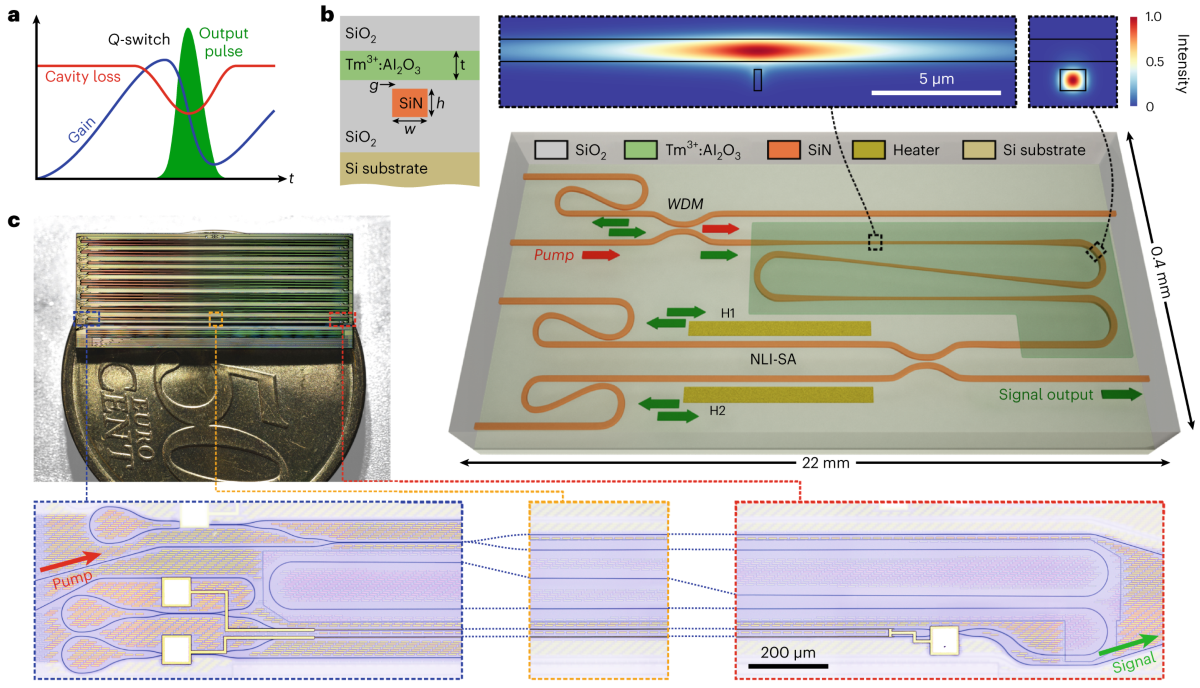
Source: MDPI
Understanding Q-Switching Instabilities in Mode-Locked Lasers
Introduction to Mode-Locked Lasers
Mode-locked lasers are a type of laser that produce extremely short pulses of light, often in the picosecond or femtosecond range. They are crucial in various applications such as telecommunications, medical procedures, and scientific research. The ability to generate such short pulses is achieved through a process known as mode locking, which involves synchronizing the phases of different frequency modes of the laser’s optical cavity.
What are Q-Switching Instabilities?
Q-switching instabilities occur in mode-locked lasers, particularly when they are passively mode-locked with a saturable absorber. These instabilities can lead to the irregular emission of light pulses, which can be problematic for applications requiring stable laser output. The instabilities manifest as fluctuations in pulse parameters, such as energy and duration, often resulting in the generation of pulse bursts with inconsistent characteristics.
Causes of Q-Switching Instabilities
The primary cause of Q-switching instabilities is the interaction between the saturable absorber and the laser medium. When the parameters are not optimally set, the laser may exhibit unstable behavior, leading to long periods between pulse bursts. During these periods, the pulse energy can drop significantly, and the pulses are generated from spontaneous emission, preventing the system from reaching a steady state. This scenario is common when the bunch period is elongated, and the laser operates with low pulse energy.
Methods to Suppress Q-Switching Instabilities
To achieve stable continuous-wave mode locking with constant pulse energy, several strategies can be employed to suppress Q-switching instabilities:
Optimizing Laser Parameters
Adjusting the laser parameters, such as the gain medium, cavity length, and saturable absorber recovery time, can help stabilize the laser output. Ensuring that these parameters are within the optimal range is crucial for minimizing instabilities.
Utilizing Advanced Techniques
Advanced techniques, such as using inverse saturable absorption or incorporating semiconductor devices, can enhance the stability of mode-locked lasers. These methods help control the laser dynamics and reduce the likelihood of Q-switching instabilities.
Conclusion
Q-switching instabilities pose a significant challenge in the operation of mode-locked lasers. However, through careful optimization of laser parameters and the application of advanced stabilization techniques, these instabilities can be effectively managed. Continued research and development in this field are essential to further enhance the performance and reliability of mode-locked lasers in various applications.
Further Reading
For those interested in exploring this topic further, numerous academic publications and resources are available to provide deeper insights into the mechanisms and solutions associated with Q-switching instabilities in mode-locked lasers.

Source: Nature
Feel free to comment your thoughts.



